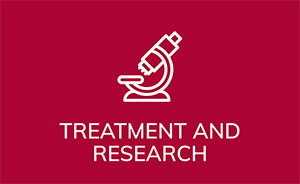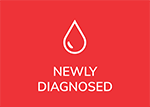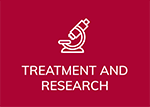Authored by Dr. Brian Koffman
Bottom Line:
Acalabrutinib plus obinutuzumab had a 100 percent response rate at 14 months and a deep reduction of disease in the bone marrow in treatment-naive CLL. Limited-duration combination therapies are starting to reshape how chronic lymphocytic leukemia (CLL) will be treated, but which combination is best is still unclear.
Who Performed the Research and Where Was it Presented:
Dr. Jan Burger of MD Anderson Cancer Center was the principal investigator of this research, which was presented as a poster at the European Hematology Association (EHA) Annual Congress in Madrid in 2024.
Background:
The Bruton’s tyrosine kinase (BTK) inhibitor acalabrutinib, like all approved BTKi, induces durable responses in most patients with CLL, but they are almost always partial remissions (PR). Therefore, treatment is typically continued indefinitely until intolerance or disease progression. Adding the monoclonal antibody rituximab to ibrutinib did not improve outcomes in past studies, suggesting adding a monoclonal antibody might not change the treatment paradigm. However, obinutuzumab is a much more potent anti-CD20 monoclonal antibody and could make for a more synergistic combination. Acalabrutinib is a different and better-tolerated BTKi. This ongoing phase 2 trial looks at treatment-naïve patients with CLL who received acalabrutinib plus obinutuzumab in an attempt to see if this combo could allow for a powerful fixed-duration therapy with a BTKi plus an antibody, similar to the effective approved combinations of obinutuzumab or rituximab with venetoclax.
Methods and Participants:
This is the report on only the first 20 patients in this ongoing trial for untreated CLL patients who meet treatment criteria. Starting in cycle 3, patients receive the standard dose of 100 mg acalabrutinib twice daily for 24 cycles, combined with six monthly obinutuzumab infusions. Patients who do not achieve complete remission (CR) after cycle 8 could receive an additional 6 monthly doses of obinutuzumab during cycles 9 –14. Treatment is discontinued after 24 cycles.
Results:
- The median age of the patients was 65 years (range, 40 – 83 years).
- 10% had del17p or TP53 mutation.
- 45% had unmutated IgHV.
- 65% advanced stage disease (RAI stage III/IV).
- The median baseline absolute lymphocyte count (ALC) and β2-microglobulin were 30.8×109/L (range, 3.6 – 188.4 x 109/L) and 4.2 mg/L (range, 2.2 – 7.9mg/L) respectively.
- After a median follow-up of 16 months, 18 (90%) of 20 patients were still in the study.
- One patient died due to complications from a presumed bacterial pneumonia.
- One patient was taken off the study due to gallbladder inflammation and low neutrophils.
- The estimated two-year progression-free survival (PFS) and overall survival (OS) were 94.4% for both.
- Twelve patients were assessed after 14 months of therapy, with 25% in a complete response (CR) and 75% in a partial response (PR), accounting for an overall response rate of 100%.
- Only one patient reached undetectable measurable residual disease or uMRD-4.
- No patient had disease relapse or progression during the study period reported.
- The median level of bone marrow infiltration by CLL cells declined from an average of 83.6% (range,36.1 – 94.0%) at baseline to 0.14% (range, 0.0 – 0.45%) after 24 months of therapy.
Summary and Conclusions:
This preliminary data is impressive, with a 100% response rate and remarkable levels of CLL reduction in the marrow, but only one patient achieved undetectable measurable residual disease. However, the number reaching uMRD is less than that seen with several venetoclax-based therapies, raising questions about how long the remissions will hold. Those who achieved uMRD had the most durable response compared to other therapeutic combinations.
One patient died of infectious complications. The safety related to immune suppression and the durability of the response will be assessed as the patients continue to be monitored and will help determine the role of this combination going forward.
Links:
Listen to Dr. Koffman’s monologue below.
Read the full EHA abstract at A PHASE II STUDY OF TIME-LIMITED TREATMENT WITH ACALABRUTINIB PLUS OBINUTUZUMAB IN PATIENTS WITH TREATMENT-NAÏVE CHRONIC LYMPHOCYTIC LEUKEMIA

















